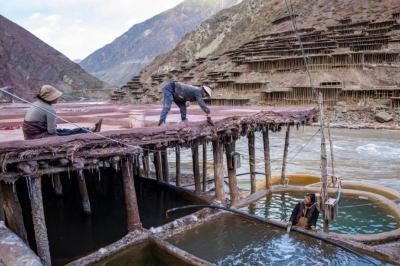Sep.25,2017 -- With its thin air and clear sky, Ngari Prefecture is an ideal place for astronomers to gaze into the remote universe. Chinese scientists are building a world-class observatory base at an altitude above 5,000 meters at Ngari, in the west of China's Tibet Autonomous Region. They have launched a project to detect primary gravitational waves there. They also plan to conduct high-precision detection of cosmic rays and build China's largest optical telescope. Xue Suijian, deputy director of the National Astronomical Observatories of China (NAOC), says astronomical observation requires clarity, transparency, tranquility and aridity of the atmosphere. A suitable site for multiple wave-length observation is a rare resource. It's widely believed that the world's best astronomical observatories are located on Mauna Kea mountain, on Hawaii's Big Island, and in the desert in northern Chile. These two places, in the northern and southern hemispheres respectively, are home to more than 90 percent of the world's large astronomical facilities. However, due to objections from native Hawaiians, the world's largest optical telescope, the Thirty Meter Telescope (TMT), might be the last astronomical project to be built on Mauna Kea, says Xue. Scientists are eager to find another good observatory base in the northern hemisphere. Xue said NAOC began looking for a suitable site in western China in 2004, focusing on a ridge ranging from 5,000 meters to 6,200 meters above sea level in Ngari. Now the Ngari Observatory is starting to take shape. Chinese universities and institutes, as well as research organizations from Japan and the United States, are joining NAOC with plans for projects there. China's largest optical telescope, the 12-meter telescope, is expected to be built at the site. The project is included in China's large-scale sci-tech infrastructure plan for 2016 to 2020, says Xue. Xue says NAOC will also cooperate with Tibet University and Ngari prefecture government to launch a project for the high-precision detection of cosmic rays above the 50 TeV energy region. Scientists from the University of Tokyo have pledged equipment worth tens of millions of yuan for the project. Scientists are also building at Ngari the world's highest station to observe primary gravitational waves, dubbed "the first cry of the cosmos after the Big Bang." |
- Home
- News Tibet |Exclusive |China |World |Related News |Latest
- Documents White Papers |Others
- Photo Politics |Economy & Society |Culture & Religion |Human & Nature |Beautiful Tibet |Other Tibetan-Inhabited Area |Exchanges |Related
- Video News |Documentary |Micro-Video |Entertainment
- Art
- Tourism
- In Focus
- About Tibet






